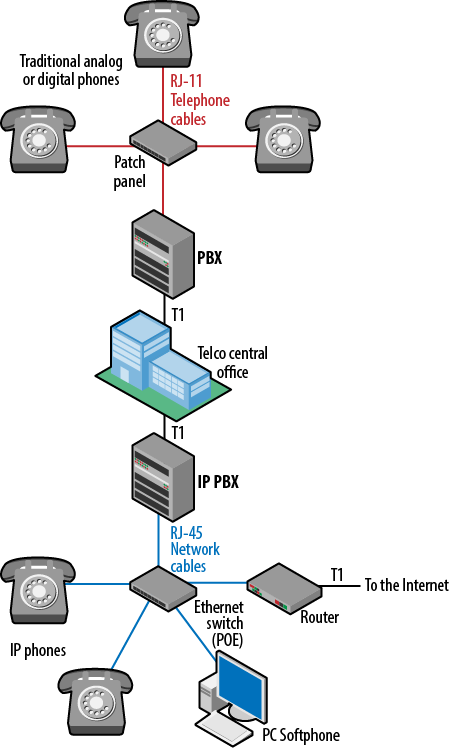Chapter 6. The Voice of a New Generation
Texting, chatting, and email aside, the first killer app of any enterprise is voice.
Traditionally, most or all of the employees of a company sat in the same physical facility and had dedicated desk phones. These phone connected via wires buried in the walls to a central hub called a Private Branch Exchange (PBX). The job of the PBX was to route calls between internal phones—i.e., calling someone at their desk using their extension—and shuttling calls to and from the outside world via dedicated phone lines called trunks.
Today, most PBXs are digital, and more often than not they are connected via IP to the desktop phone and use the regular office network rather than dedicated wires. You can see how the two approaches differ in the diagram.

Figure 6-1. A traditional PBX versus an IP-based system
The first thing to notice is that a much wider variety of devices are supported by an IP PBX. A traditional system supports only conventional desktop phones, whereas in an IP-based system the phones are really just software clients. That means they can be desktop phones, software clients on PCs, and even clients on mobile devices like smartphones and tablets.
In general, the technologies involved in an IP-based phone system are referred to as Voice Over IP (VoIP). That’s the acronym I’ll use in this chapter.
Enter SIP
Although several protocols have been proposed ...
Get Building a Windows IT Infrastructure in the Cloud now with the O’Reilly learning platform.
O’Reilly members experience books, live events, courses curated by job role, and more from O’Reilly and nearly 200 top publishers.

